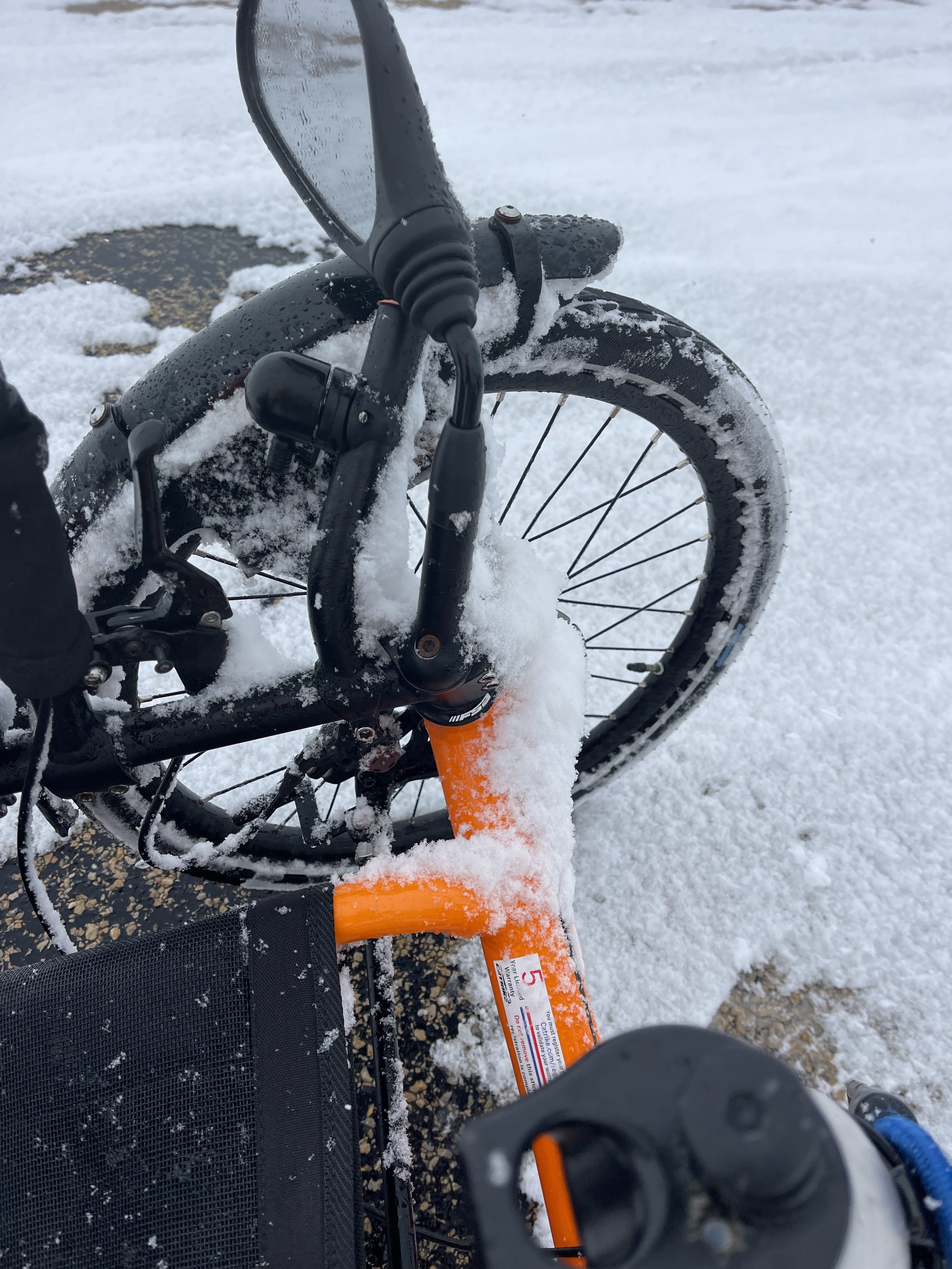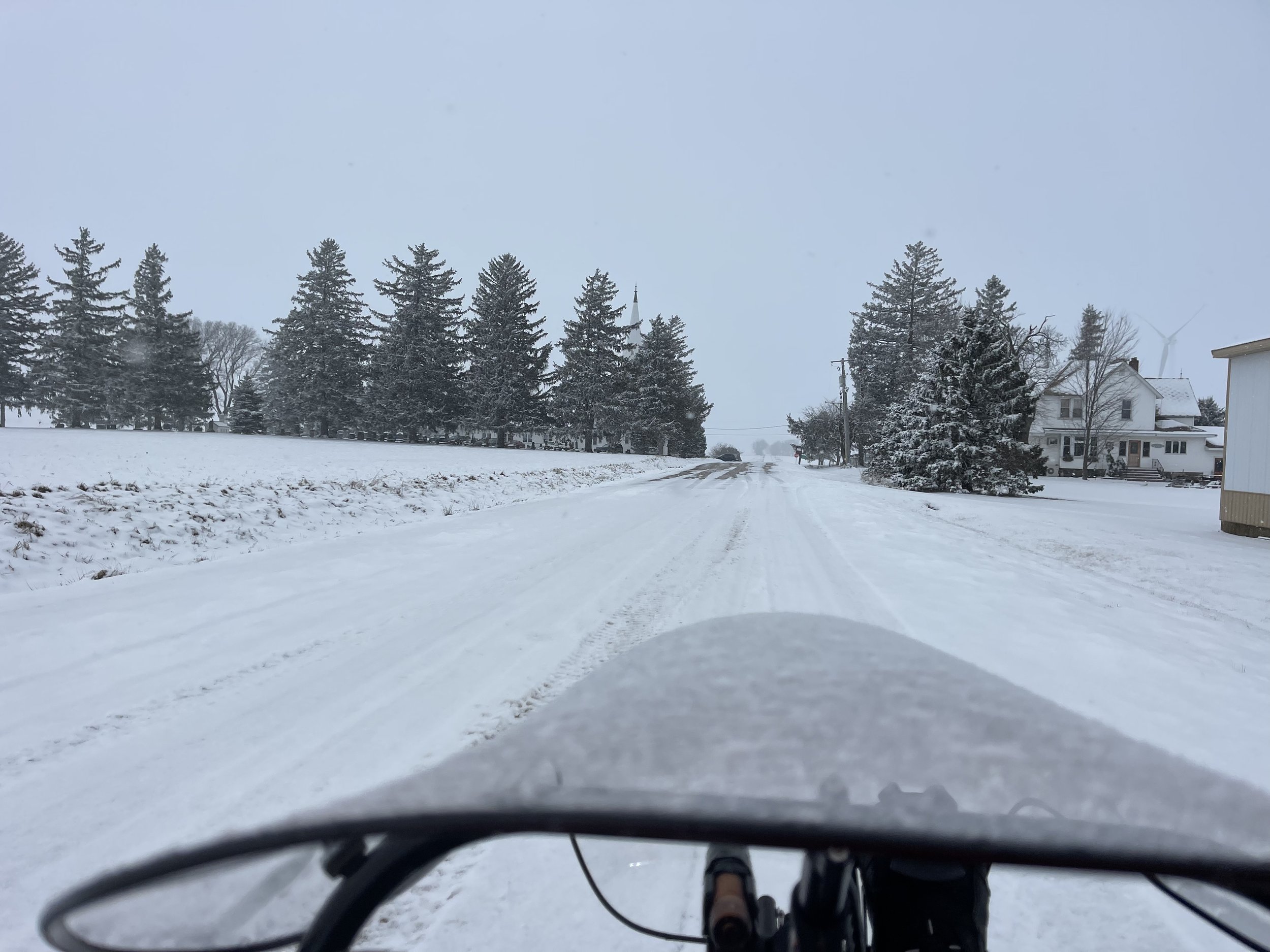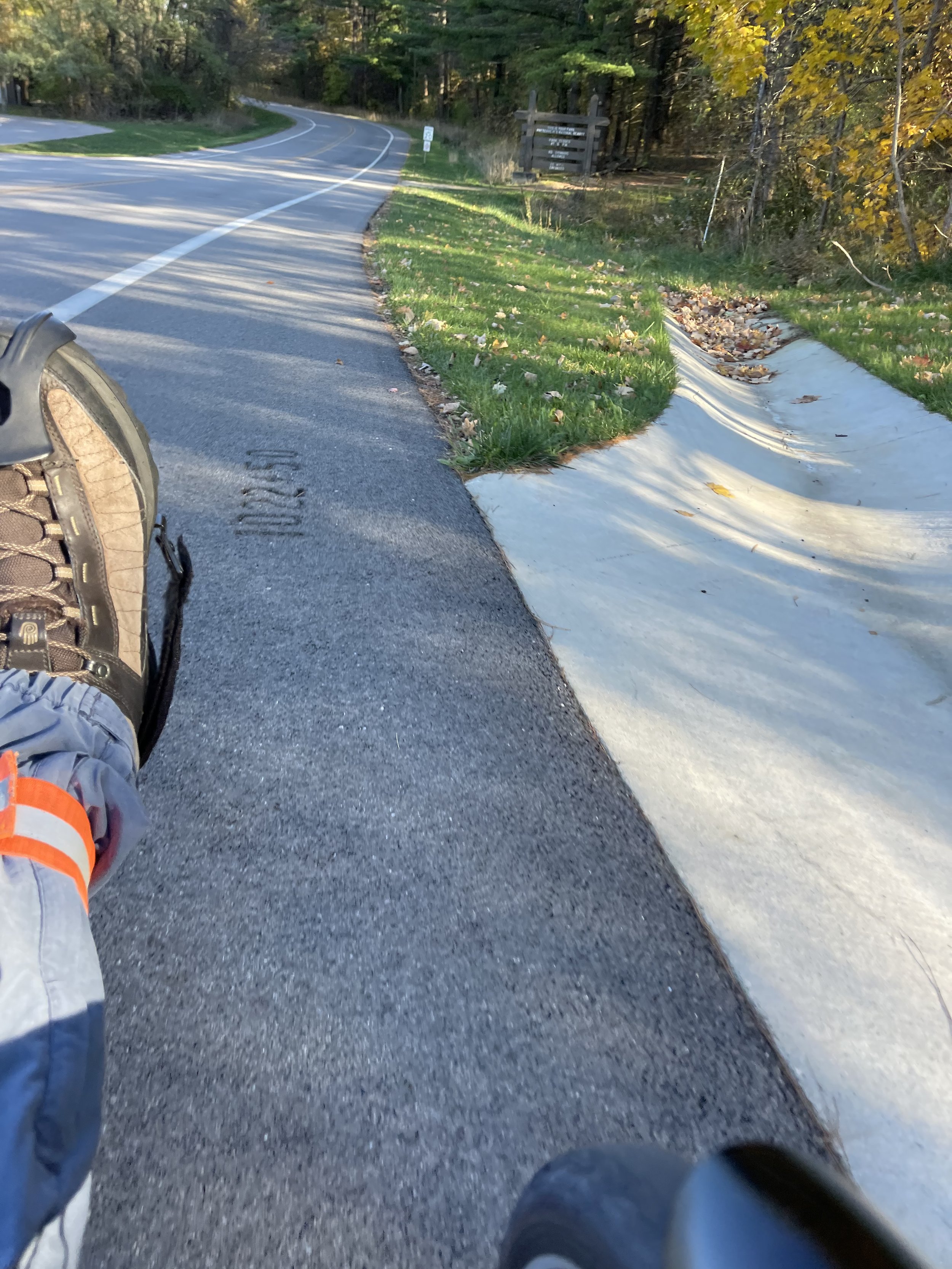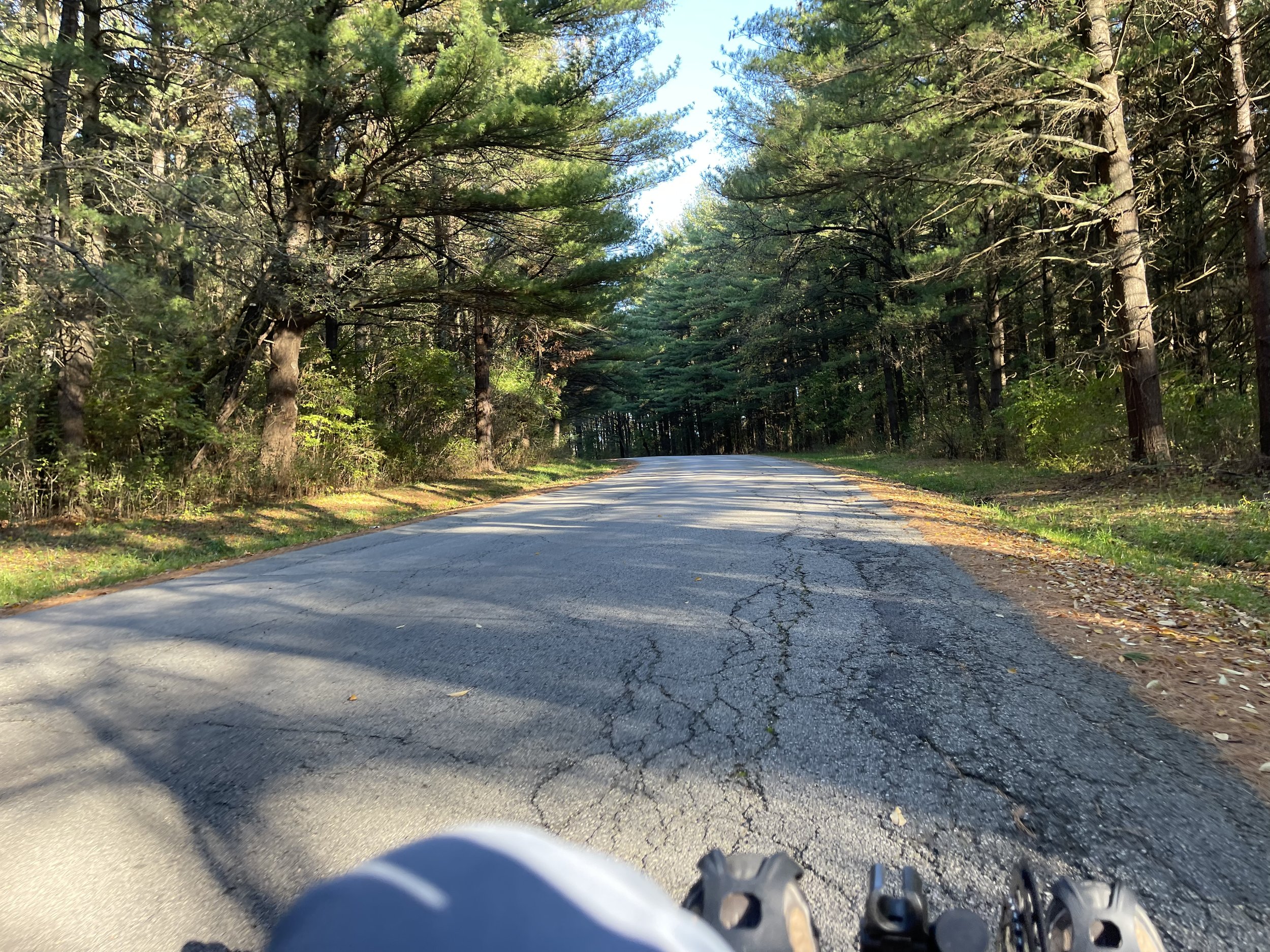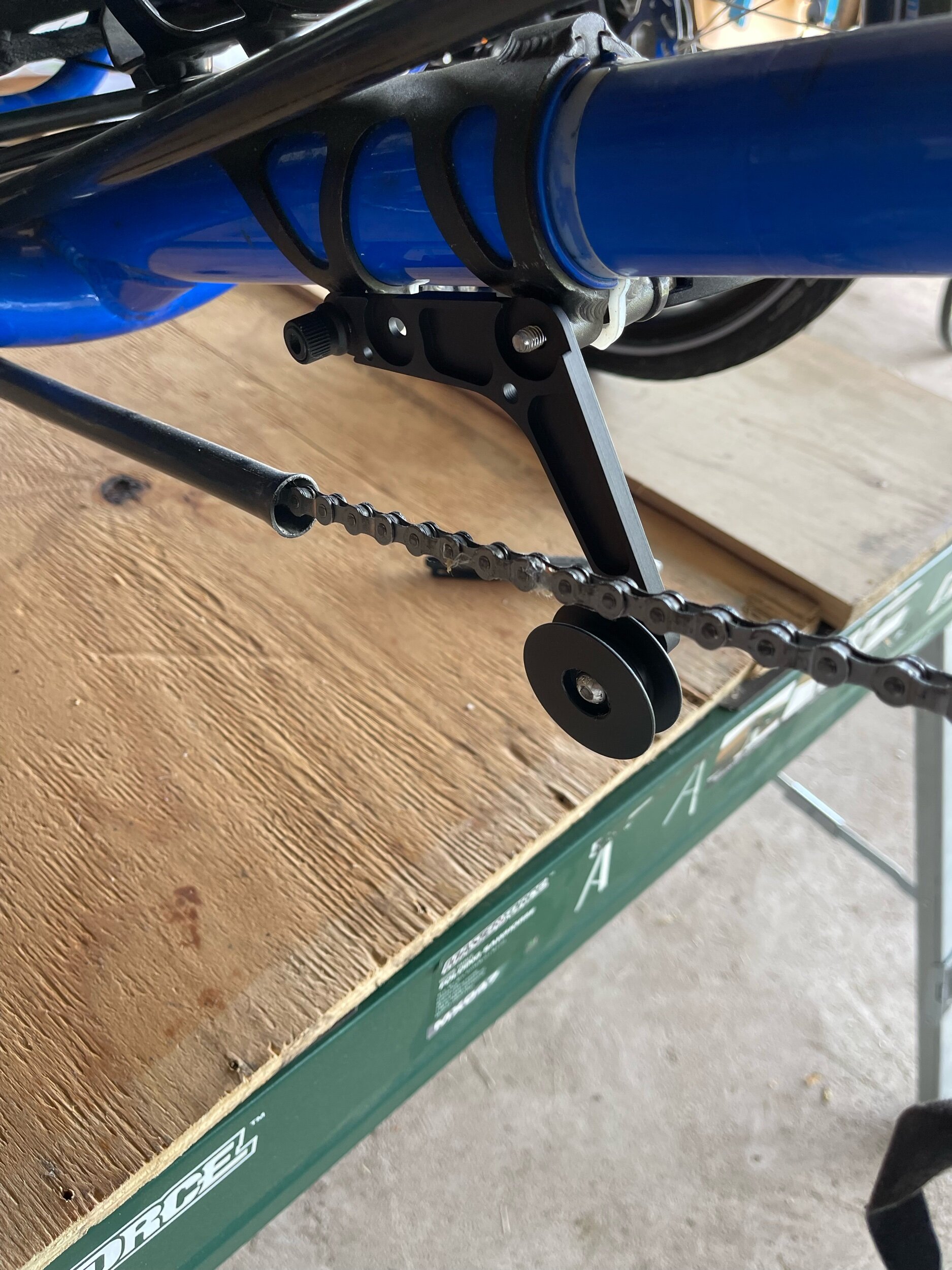I - and many others - rested there for a bit. The reward of the long climb is that there is also a long, sweeping and curving downhill sweeping through the state forest.
And then - at almost 50 miles in - you encounter what they call Mount Tabor. I’d heard several people reference this, particularly at the second rest stop on day two, because it follows a few miles after that stop. I spent some time at that stop talking with Jim and Sherry - Sherry was one of the handful of other trikers on the ride, and Jim was her husband. They were a delightful couple, and they helped me mentally prepare for this particular challenge. And everything they said about it turned out to be true.
Mount Tabor is not long - 0.2-0.3 miles or so. But it’s at a 20.2% grade. And you enter it coming around a corner with absolutely no downhill lead-in. It is absolutely the steepest thing I’ve ever ridden up on any human-powered machine - upright or recumbent.
I shifted all the way down, and started in.
The Question
Being in an event with only a tiny smattering of trikes I did have people periodically ask me questions about my machine. Now one soul - who I’m pretty sure thought he was being very clever - asked me how many cases of beer I could carry on my trike (at least two if I hook up the trailer). But this being a hill climbing event, you can imagine what the primary question was:
How is that thing at climbing hills?
I’d expected the question, and typically gave the standard answer first - “slower on the way up, faster on the way down”. For folks who were interested in more detail, I talked about the difference in strategy from an upright as well.
But of course, I was also at this event to provide a more detailed answer to that very question for myself. And what I found was a more nuanced outcome that surprised and pleased me.
Was I slower on the way up? I think the real answer is: it depends.
It depends on what you are comparing yourself to. I was absolutely being passed on the uphills by people on high-end road bikes, which is, at this point, a familiar experience for me. But the thing is, the Expedition isn’t the trike equivalent of a high-end road bike. I would say that it is far more consistent with the idea of a long-distance touring bike. As such, it definitely weighs more - 15-20lbs more dry, and a little more still with my gear on it. As such, I don’t expect to be faster than those machines. By the same token, I wouldn't expect someone to run out and get an LP tank for the grill on their 18lb Trek Madone either.
But: When I was climbing most of those hills, even without a chance to enter them at speed, I was often passing people. I passed people on mountain bikes, steel touring bikes - I swear I even passed a few people on e-bikes on a couple of uphill sections. It’s hard to check speed when you are focused on climbing, but when I could I was usually moving along at around 4mph in first gear on the uphill slogs. Slow? Absolutely. But faster than some, and still moving uphill.
And when I could enter at speed, the technique I’ve described - which will almost certainly be familiar to veteran recumbent riders - worked marvelously. It always gets harder towards the top, of course, but I’d put the experience of spinning and shifting down up against any upright climb, standing in the pedals in low gear any day.
Which takes me back to…
Mount Tabor
I entered Mount Tabor in first gear, and barely moving. Thanks to Jim and Sherry I was mentally prepared for it. I was also prepared for the possibility that I’d have to get off and walk the trike. I had not had to do that up to this point, but it seemed a possibility here.
I braced against the seat and pushed against the pedals. I could barely hear anything over the sound of my own breathing. My legs were burning, I was drenched in fresh sweat, and my speed up the hill seemed glacial - I could not let go of the grips to look at my watch, but I’m sure I was not maintaining that 4mph speed from earlier hills.
And? The pattern stayed true, even at the exaggerated angle that this hill presented. The trike was slow, and hard to get up the hill. But I was passing people on the way up - some walking, and others struggling to stay upright, standing in the pedals. The ability of the trike to remain stable at very slow speeds was absolutely an advantage on this climb, and often on the ride overall.
I made it to the top on pedal power alone - no stopping, no walking.
I did, however, take a break at the top. I was happy to get there, but I still needed a rest.
The Other Way
The part that I’ve mostly left out of all of this so far is the additional bonus that goes with taking a trike out for this event: The downhills.
I did mention that there was a downhill section following Bean Blossom Hill that took a sweeping course through the state forest. And there were several others like that. I think, at this point, that I’m questioning the absolute truth of the idea that trikes are slower uphill (at least with comparable machines and riders), but that they are fast downhill is absolutely the case.
My hands down favorite example of this was a section on day two early into the ride. This was a long downhill curving to the left, just ahead of a turn into Cascades Golf Course. I hit my top speed for the day - about 38mph - going down and around that curve. It was a beautiful human-powered go-kart moment, leaning against the curve and passing, well, tons of people. That moment by itself may have made the whole event for me.
Wrapping Up
I wanted to see if I and my trike could manage an event focused on hill climbing, and I wanted to test the common, received wisdom that recumbents aren’t good at climbing hills.
I feel like I got the answers I was looking for on both counts. The Expedition and I managed to come through the entire event together - I never had to get off the trike and walk. And the relative disadvantage of not being able to stand up in the pedals appeared to be balanced by the advantages of the high speed lead in on many hills, and not needing to work to stay upright when going slow. There is a real-world benefit to having the option of just crawling up a hill.
When I look up things online about the event, in different forums, I find people talking about which machine they would take to the event and/or changing out their gear sets to different ranges to manage the hills. And if I’m being honest, I had considered asking MLW if I could take the Pocket for this event instead of the Expedition specifically because of the lower gear ratio the 20” wheel would give me over the 26” wheel on Expedition.
I didn’t, because in the end I wanted to see what my touring machine would do - to answer that question about whether it would still be useful if my “tour” took me into hilly country. The answer, I’m pleased to say, was a resounding “yes”.
Would I recommend this event to others? Absolutely! It’s well run and well supported. If challenging yourself to a long-distance hill climb group ride through beautiful countryside sounds good to you, this would absolutely be the way to go.
For myself, I’m not sure whether I’ll return. I enjoyed myself a great deal, but I also found the answers I came for. It’s a very long weekend away otherwise.
But then when I think about that long, curving downhill sweep… Maybe…


